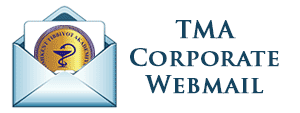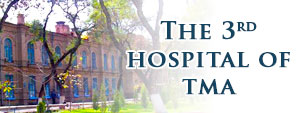
Should pay attention to talk about the structure of the patient’s face. Depending on the ethnic origin of the patient should follow the structure of the color of the face and body. Through this contest, you’ll have a lot of information. Processes at room temperature close to body temperature, the medical staff and the patient must occupy a favorable situation. Assessed by visual inspection of the patient.
During the general examination of the patient not to be ignored part of the body should be thoroughly examined to ensure that spent. The human body structure, all systems are checked.
Any control methods need to know the following: Indicators, smell, size, symmetry and move (or the availability of) and others. The assessment of the condition of the patient to determine the extent of his condition, for example, the condition of the eyes, chest and assess the structure of the body. In addition, the patient is correct and accurate diagnosis is important that more attention should be paid to the criteria. So the following plan is based on the examination of the patient:
To determine the patient’s senses. The patient can be stored or dulled senses.
1.Stupor (stupor). The patient in this case around irrelevant questions are uncertain, and later with difficulties.
2.Sopor (ceramic). In this case, the patient is in sleep mode. You can talk to wake him from sleep, then the patient will return to his position.
3.Koma (coma). At the same time, the patient’s reflexes are lost. Situation worse. Deep sleep mode. Coma following diseases (diabetes, kidney disease, blood circulation in the brain dysfunction, acute infectious diseases, diseases of the liver, brain hemorrhage, brain injury, drug influence of alcohol, morphine, Verona and other items contaminated with malaria, meningitis, epilepsy, etc.) often develops. Komatoz situation can be seen as the end of a very serious disease.
The above-mentioned diseases the patient is too vajohatliligi observed in cases of damage due to the uncertainty surrounding his senses.
The patient’s condition. The patient can monitor the status of the following:
1.Faol state – in this case, you can change the status of the patient’s own place and free to walk independently.
2.Passiv (passive) circumstances when the patient lies still in place and the attention of the surrounding area, and others in need of help.
3.Majburiy facilitate the situation of the patient’s condition. Optional situation may be different. For example, patients suffering from cardiovascular diseases and ortopnoe sleep on the right side (the feet of the patient sitting down) to see appropriate.
Mandatory condition – other diseases (bronchial asthma, bronchiestatsis, pleurisy, inflammation, peritonitis, appendicitis, etc.) could be ill patients. Of patients with bronchial asthma disease often places, but a chair with his hands on his knees morning. In this case, the breath auxiliary muscles of respiration and actively participate in the patient’s condition and less congestion.
Some diseases (acute peritonitis, acute appendicitis), severe pain in the abdomen, which will be the back layer of the two.
Pancreatic cancer, diaphragmatic pleurisy, tuberculosis of the spine disease patients often appropriate. That slows the feeling of abdominal pain.
Stomach ulcer (ulcer) disease should be part of the abdomen, and the pain gradually reduced.
Meningitis, the patient being forced to lay down, threw back his head and two-foot layer of lies. In many cases, these mandatory conditions will help the doctor to identify the disease.
The Constitution is the sum of the functional and morphological characters, congenital or acquired nature. Navrus constitution Adopted the classification proposed by the Chernorutskiy. According to the three different type of constitution: normostenik, asthenic and giperstenik. Knowledge of the constitution and the internal diagnostics of diseases. For example: gipersteniklarda decreased metabolism, and often obesity, gall stones, kidney stones, hypertension, atherosclerosis, diseases develop. Asteniklarda metabolism increased, and most of them are lung diseases, the inner member downward drift (splanxnoptoz).
Therefore, on the basis of the plan for the rehabilitation and preventive measures important (work, recreation, nutrition, exercises and sports activities, etc.). The patient’s obesity or wasting, and examine the development of the subcutaneous fat layer will be determined by palpation. Subcutaneous layer of abdominal fat, measure equal to about 2 cm below the ribs.
Body weight scales.The patient’s specific medical weighing and weight measured. morning in the morning, dressed in a simple and urinary bladder is incomplete without appropriate body weight. Check the smooth functioning of the scales to measure the weight of the patient, a thin line measurement position 0. Generally, such a size or two times a week.
Face.To examine the appearance of the disease due to a variety of diseases, using..face weight (acuity) can be determined. In addition, acute peritonitis, acute uremia and other diseases, such as we can. If the patient is severe, look, face edema and skin. This was the first appearance of the face identified by Hippocrates, the founder of medicine and violated facies Hippokratica swollen, pale title.
Kidney disease (nephritis, nefroz) face and eyelids swell, the face facies called nefriticus. Heart attack, congenital or acquired heart defects can cause a variety of changes, a swollen lip corners (akrotsianoz) defects occur. Mitral valve insufficiency and stenosis also face specific changes. This facies as mitralis. Aortic valve insufficiency little pale. Long septic endocarditis mode and turn yellow hue – cafe auiait (the color of coffee and milk) tuberculos «habitus phtizicus»-, pale face, long eyelashes.
Endocrine diseases (Bazedov disease, miksedema, acromegaly, etc.) in the form of the patient’s face for a few changes. In particular, hyperthyroid disease Bazedov face (facies Basedovica) so large and inexpressive eyes, the sense of fear and covers. Thyroid functional failure (miksedema) faces swollen as a result of a circle and a sign of indifference will appear.
The pituitary gland in the front part of the eosinophil adenoma disease and enlarged redness of the cheek bones and nose, jaw, face, lips, tongue can be significantly enlarged. Bulging out of the nose, severely swollen face, nose and lips, rash (herpes), rash, jaundice, inflammation of the lungs. The rashes also occur in the skin and organs of the body, for example, different types of infections: Malero, tif, cerebrospinal me ningitda. The presence of herpes virus that is spread throughout the neural networks of herpes zoster.
Nose. Nose, cheek bones, jaw tense zoom akromegalia belongs. Passing through the front wall of the nasal bone (reduplication), and various lacerations. In addition, the result of a congenital syphilis disease. This disease develops in the nasal bone necrosis. Always trademark red nose alcohol. Nasal bleeding and cardiovascular diseases. In addition, Osler, hypertension, cardio-vascular system diseases and diseases of the blood (leukemia, Verlgof disease, trombotsitopatias), fractures, chronic hepatitis, septic infections, uremia, and other situations. Three band of blood to the brain and nerve inflammation of the nose pinch-sided smooth.
Mouth.The language of the oral cavity, it will be possible to study the changes in the teeth and gums. Swelling of the gums and bleeding, acute leukemia caused by mercury poisoning. According to the chronic lead poisoning gums dark lines in the world.
A variety of infections and the oral cavity evidence of foul odors, stomatitis ailments. Milk orange colored line, mouth indescribable spots one sign of the disease of Addison. Language, build a variety of infections, acute peritonitis and other diseases. Through the examination of the language of the patient’s general condition dryness of the evaluation..Language’s very large – the largest slice (cracks) to appear. In addition, the language in the form of heavy bleeding and dark uremia’s appears obvious. In some cases, reduce the flattening of the upper part of the language. It belongs to the individual symptoms of Addison’s disease. Axils of the emergence of pain and tingling sensation of the tip of the tongue is a sign of ill health.
Sometimes the language is reddish in color. Language seemed the reason for a lack of vitamin Q12. In children with acute infectious diseases of language, dark purple in color. Typhoid disease, an upper surface of the tongue, the tip of the red-orange color. Akromegalia language of their size increases. Liver became red serros language (raspberry). Atrophic gastritis language teats bent.
Senses. The external environment through the different effects of different sensory organs, and are adapted to the external environment.
Therefore, the examination plays an important role. During seen the organic mode (using the eye, you can not afford s) should be paid attention to. Bazedov one of the main signs of eye bulging in horror (bilateral ekzoftalm). A one-way flow of blood in his eyes ekzoftalm a variety of tumors, inflammation and tumors.
Miksedema, peritonitis, agonia to remain seated in the eye jewels. King and retina yellow hepatitis, gall bladder and tract stone disease, tumor disease, as well as the pancreas and dangerous sign of malignant disease. Jewels in giving attention to its size, location, and a response is necessary to take into account the reaction of the light. Morphine, opium, and various types of drug poisoning jewels can be seen that the contraction of the eye.
Eyeball contraction occurs in parallel in developing, as well as the body pilocarpine, dropping rezerpin reduce the pupil of the eye muscles.
Blood flow to the brain, komatoz and atropine poisoning with medication, the pupil expands. Jewels of the same diagnostic significance. Eye jewels be different than the volume of the central nervous system is broken.
The skin. A branch of the first grade, the examination of skin on top of the skin and the underlying layers of the upper part of the attention Pale skin anemia, acute and chronic blood loss (due to injury or blood quick, various ulcer diseases, gynecological blood loss and fetal development), cardiovascular disease (marbling, Addison-wheel anemia, leukemia, hemolytic anemia, Verlgof disease) is a chronic and severe infectious diseases, sepsis, malaria endocarditis, poisoning and other diseases. In addition, the skin pale hemoglobin’s decrease from the norm.
Pale sometimes patients suffering from kidney diseases, fear, loss, hypertension, anesthesia, as well as lack of blood circulation (the compression at the bottom of the aorta, aortic valve insufficiency) mode. Collapse and peritonitis pale started observ. Pale suddenly the patient’s blood lose. Typically, the upper part of the skin of these patients pale dizziness, anesthesia cases, pulse acceleration, decrease in arterial blood pressure cases. In addition, some of the pale a result of the development of acute hepatitis.
Vascular system of the heart moved with the pressure of the arteries caused by lack of blood to the heart, arteries, O2 turn capillary pulmonary arteries to the heart. This process leads to the restoration of the venous blood hemoglobin’s and appears cyanosis in the corner of the lips. This condition is called peripheral cyanosis.
Respiratory diseases (emphysema, pnevmoskleros and other respiratory inflammation) and gaseous pollutants can cause. Acute cyanosis congenital heart parog, sclerosis of the arteries of the lung embolism, lung can meet emphysema. Sometimes evolve into the client area of the breast bone, skin yellow, which indicates an increase of bilirubin in the blood. This will result in jaundice (icterus) is called. Hyperbilirubinemia, depending on the duration of symptom-mining and development of the skin varies in color: pale lemon color – orange color.
Pigmentation is not the same location. Before the mouth (soft palate,sublingua mucosa) are painted, then folds around the nose and face, the hands, painted in reparations. It seemed gradually spread all over the body (subicterus).
Widening of the dark color of the skin for a long period of time (argirosis), arsenic (melanoma) can occur due to consumption.
Breast of a change in the color of the skin, as well as the formation of abdominal white line is indicative of pregnancy. Examination depigmentatsiya white cells (Greco-go), or small spots (Leucoderma) form.
Skin diagnostic examination. The colored rash, hemorrhage, ulcers, scarring, hair trim is a violation of pathology and nail care. In addition, by means of palpation of skin dryness, humidity, level of ductility. The amount of color pigment, depends on the thickness and filled with blood. Changes in skin color is different: tunic (whey), red, green, yellow, the color of the earth.
The functionality of temporary paleness (pain, excitement, fear and other) or permanent (anemia, kidney disease, aortic valve defect and other).
Redness physiological (Mobile, angry, under the influence of the outside temperature) and pathological (disease, hypertension, greenhouse gas, atropine, opium amilnitrit substances contamination, etc.) to be allowed.
The blade is always a pathological condition, and it is a violation of gas exchange with a lung disease, heart and blood vessel diseases (due to stagnant blood), will consist of poisoning. Bruises are receding (tip of the nose, ear, supra, lip), peripheral (finger nails) (akrotsianoz). Yellow color may appear different: jaundice (subicteric), orange, yellow Jaundice becomes longer Greens. Jaundice appears stronger in the mucous membrane of the greyness of the eye and the palate. Multiplied into the carotene pigment in the blood (tomato, carrot consumption) or drank some of the drugs used hands, feet, skin discolored. He was a real difference in jaundice, the white layer of the eye and the palate mucosa yellow, adrenal gland insufficiency occur in the form of a bronze-like spots on the skin, as a result of loss or reduction of pigment in the skin and white spots. They have the same magnitude and often symmetric and does not lead to any functional disorders in the body. Various spots (macula), the node (Papua), the bubble (vesicula), blister (URTICA), erythema (erythema), skin blood point argument (petixiya) The appearance of the rash.
A number of infectious diseases, including measles, rubella, chicken pox rash of body away with them. Internal disease (lobar pneumonia, influenza), all kinds of allergies may be a rash. Skin scar (scar after smallpox, syphilis scar, should be Itsengo syndrome, scarring, post-operative scarring, and so on), also known diagnostic significance. Pay attention to the humidity or dryness of the skin. Skin dryness of the body, dehydration, diarrhea, vomiting, mixedema, diabetes, chronic nephritis observ. Skin associated with an increase in humidity and sweating, fever infectious diseases (influenza, black lame disease, tuberculosis (TB), sepsis), and rheumatism, Bazedov more common disease .
Examining the hair growth, nature, focus mode. He is the diagnosis of diseases of the glands of internal secretion is one of the main characters.
Fingers and nails specific changes (drums stickly finger nail mirrorly) long and purulent diseases. In addition, attention will be given to the examination edema. They are locally or throughout the body (anasarca) can be distributed. Appear swollen tissue and increases the volume of the members changed their appearance.Examining the lymph nodes can be sure of their size.
Control questions
1. sisterly care information on the implementation of the objective significance?
2. The implementation of sisterly care in personal data protection?
3. is carried out in order to collect the patient’s history?
4. What is the period of the disease in patients with normally occur?
5. How to dim or stored in the patient’s senses?










